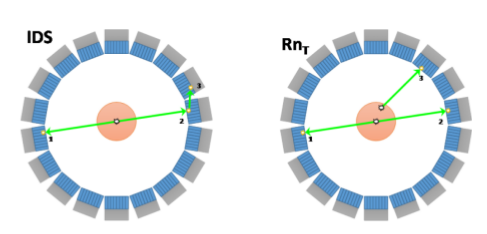Recovery and normalization of triple coincidences in PET

| AUTHORS | |
| JOURNAL | Medical Physics, Vol 42, No 3, March 2015 |
| ABSTRACT | Purpose: Triple coincidences in positron emission tomography (PET) are events in which three γ-rays are detected simultaneously. These events, though potentially useful for enhancing the sensi- tivity of PET scanners, are discarded or processed without special consideration in current systems, because there is not a clear criterion for assigning them to a unique line-of-response (LOR). Methods proposed for recovering such events usually rely on the use of highly specialized detection systems, hampering general adoption, and/or are based on Compton-scatter kinematics and, consequently, are limited in accuracy by the energy resolution of standard PET detectors. In this work, the authors propose a simple and general solution for recovering triple coincidences, which does not require specialized detectors or additional energy resolution requirements. Methods: To recover triple coincidences, the authors’ method distributes such events among their possible LORs using the relative proportions of double coincidences in these LORs. The authors show analytically that this assignment scheme represents the maximum-likelihood solution for the triple-coincidence distribution problem. The PET component of a preclinical PET/CT scanner was adapted to enable the acquisition and processing of triple coincidences. Since the efficiencies for detecting double and triple events were found to be different throughout the scanner field-of-view, a normalization procedure specific for triple coincidences was also developed. The effect of including triple coincidences using their method was compared against the cases of equally weighting the triples among their possible LORs and discarding all the triple events. The authors used as figures of merit for this comparison sensitivity, noise-equivalent count (NEC) rates and image quality calculated as described in the NEMA NU-4 protocol for the assessment of preclinical PET scanners. Results: The addition of triple-coincidence events with the authors’ method increased peak NEC rates of the scanner by 26.6% and 32% for mouse- and rat-sized objects, respectively. This increase in NEC-rate performance was also reflected in the image-quality metrics. Images reconstructed using double and triple coincidences recovered using their method had better signal-to-noise ratio than those obtained using only double coincidences, while preserving spatial resolution and contrast. Distribution of triple coincidences using an equal-weighting scheme increased apparent system sensitivity but degraded image quality. The performance boost provided by the inclusion of triple coincidences using their method allowed to reduce the acquisition time of standard imaging procedures by up to ∼25%. Conclusions: Recovering triple coincidences with the proposed method can effectively in- crease the sensitivity of current clinical and preclinical PET systems without compromising other parameters like spatial resolution or contrast. |
| LINK | http://dx.doi.org/10.1118/1.4908226 |



